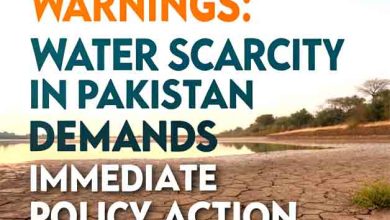Pakistan’s Bold Path to Net Zero: Challenges, Solutions & the Road Ahead
Pakistan’s path to net zero is full of challenges and opportunities. Learn how AI, carbon markets, and global investment can drive climate action forward.
Pakistan’s path to net zero is a defining challenge of our time. As a developing nation, Pakistan is disproportionately affected by the consequences of climate change—ranging from extreme weather events and droughts to water scarcity and reduced agricultural productivity.
Despite contributing less than 1% to global emissions, Pakistan remains one of the most climate-vulnerable countries in the world. This underscores the urgency of embracing sustainable development and decarbonisation strategies.
Carbon Emission Trends in Pakistan
Understanding Pakistan’s emission patterns is key to developing long-term strategies.
-
In 2020, carbon emissions stood at 184,111 kilotons.
-
This was a slight increase from 2019, but lower than 2018 when emissions peaked at 186,865.60 kilotons.
-
The figures highlight inconsistent progress toward emission reduction.
Such fluctuations make it evident that a robust, stable framework is needed to sustain Pakistan’s path to net zero.
The Missing Piece: A Structured Carbon Market
Currently, Pakistan lacks a fully functional carbon trading system, making it difficult for industries to:
-
Accurately price carbon credits
-
Receive financial incentives for green initiatives
-
Attract international climate finance
Without a structured carbon market:
-
Companies lack motivation to cut emissions.
-
SMEs struggle with bureaucratic hurdles.
-
Investors hesitate due to unclear regulations.
A transparent and credible carbon trading market can provide the incentives needed to transition toward a green economy.
Innovative Technologies: AI, Blockchain, and Big Data
To overcome credibility and transparency issues, Pakistan must embrace technology in its climate efforts.
Key Technological Solutions:
-
AI & Predictive Analytics: Offer real-time insights, eliminate manual verifications, and forecast carbon pricing trends.
-
Blockchain: Ensures transparency by providing immutable records of all carbon credit transactions.
-
Remote Sensing: Verifies emissions reductions through satellite monitoring, improving accuracy.
By adopting these tools, Pakistan can:
-
Increase investor confidence
-
Improve data reliability
-
Reduce fraud and manipulation
💡 Case in Point: Blockchain-enabled carbon platforms in Switzerland and Singapore have revolutionized trust in emission trading systems.
Challenges for Industries and SMEs
Despite potential, many industries—especially small and medium enterprises (SMEs)—face obstacles:
Key Barriers:
-
Limited access to reliable carbon pricing data
-
Lack of awareness and education
-
High compliance and entry costs
-
Absence of user-friendly platforms
Solutions:
-
Introduce digital carbon exchanges with smart contracts
-
Launch national awareness campaigns
-
Provide financial incentives for first-time carbon market entrants
Pakistan must ensure its private sector is equipped to engage in sustainable growth.
Learning from Global Carbon Market Success Stories
Several countries have successfully integrated carbon markets into their economies. Pakistan can adopt similar strategies.
Sweden:
-
Introduced a carbon tax in 1991
-
Tax now stands at $139/ton of CO2
-
Achieved 25% emissions reduction, while economy grew 60%
European Union:
-
The EU Emissions Trading System (EU ETS) launched in 2005
-
Achieved nearly 40% drop in emissions in covered sectors
China:
-
Launched its national carbon market in 2021
-
In 2025, expanded coverage to steel, cement, and aluminium
-
Targets over 60% of national emissions
These case studies prove that carbon pricing and trading work, even in large, industrial economies.
The Road Ahead for Pakistan
For Pakistan’s path to net zero to be effective, a multi-pronged approach is essential.
Priority Actions:
-
Develop a national carbon trading platform
-
Digitize emission verification with AI and remote sensing
-
Adopt transparent regulatory policies
-
Facilitate SME participation
-
Align with global carbon standards
Strategic Benefits:
-
Reduced national carbon footprint
-
Boost in green investment and climate finance
-
Enhanced global reputation for sustainability
-
Job creation in the green economy
With the right roadmap, Pakistan can transition from a climate-vulnerable nation to a climate resilience leader.
Conclusion: A Greener Future is Possible
Pakistan’s path to net zero is not just a climate imperative—it is an opportunity for economic transformation.
To recap:
-
The absence of a carbon market is a major hurdle.
-
Technologies like AI, blockchain, and big data can bridge gaps in credibility.
-
Global success stories provide blueprints for Pakistan to follow.
-
Policy reform, awareness, and investment are crucial to success.
By establishing a structured carbon market, Pakistan can unlock new green investment channels, contribute to global climate goals, and build a resilient, low-carbon future for generations to come.







